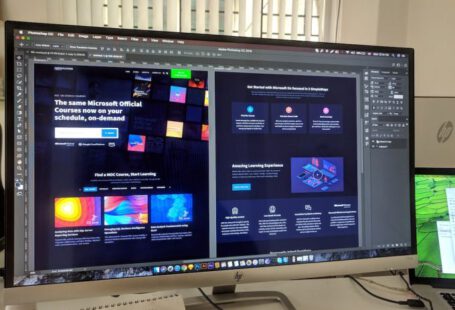In today’s digital age, user engagement has become a crucial factor for the success of any online platform. With countless options available to users, it is essential for businesses to create an appealing and user-friendly experience to capture and retain their attention. This is where effective UX design comes into play. By focusing on the needs and preferences of users, businesses can create a seamless and enjoyable experience that maximizes user engagement. In this article, we will explore some key strategies to achieve this goal.
Understanding the User
The first step in maximizing user engagement is to understand the target audience. By conducting thorough research and analysis, businesses can gain valuable insights into the needs, preferences, and behaviors of their users. This information can then be used to inform the design process and create a user experience that resonates with the target audience. From the layout and navigation to the color scheme and typography, every aspect of the design should be tailored to meet the specific requirements of the users.
Simplifying the User Journey
One of the main reasons why users disengage from a website or app is a complicated user journey. When users are faced with a complex or confusing interface, they are more likely to abandon the platform and seek alternatives. To avoid this, businesses should focus on simplifying the user journey. This can be achieved by eliminating unnecessary steps, providing clear and intuitive navigation, and ensuring that the most important features are easily accessible. By streamlining the user journey, businesses can reduce friction and encourage users to engage with the platform.
Creating Interactive Elements
Another effective strategy for maximizing user engagement is to incorporate interactive elements into the design. Interactive elements, such as animations, sliders, and hover effects, not only make the user experience more enjoyable but also encourage users to explore and interact with the platform. These elements can be used to highlight important information, guide users through the interface, or add a touch of fun and interactivity to the overall experience. By incorporating interactive elements strategically, businesses can captivate users and keep them engaged for longer periods.
Optimizing for Mobile Devices
With the increasing use of smartphones and tablets, it is crucial for businesses to optimize their platforms for mobile devices. A responsive design that adapts seamlessly to different screen sizes and resolutions is essential to provide a consistent and engaging experience across all devices. Moreover, mobile optimization also includes minimizing load times, optimizing images, and ensuring that the content is easily readable on smaller screens. By prioritizing mobile optimization, businesses can cater to the growing number of mobile users and maximize user engagement.
Encouraging User Feedback
User feedback is a valuable source of insights for businesses. By actively seeking feedback from users, businesses can gain a deeper understanding of their needs and preferences, identify areas for improvement, and make data-driven design decisions. This can be done through surveys, feedback forms, or even by incorporating a live chat feature to facilitate direct communication with users. By actively involving users in the design process, businesses can create a sense of ownership and loyalty, leading to increased user engagement.
In conclusion, maximizing user engagement through effective UX design is crucial for the success of any online platform. By understanding the target audience, simplifying the user journey, incorporating interactive elements, optimizing for mobile devices, and encouraging user feedback, businesses can create a user experience that captivates and retains users’ attention. By prioritizing user engagement, businesses can build strong relationships with their users, foster loyalty, and ultimately drive success in the digital landscape.





